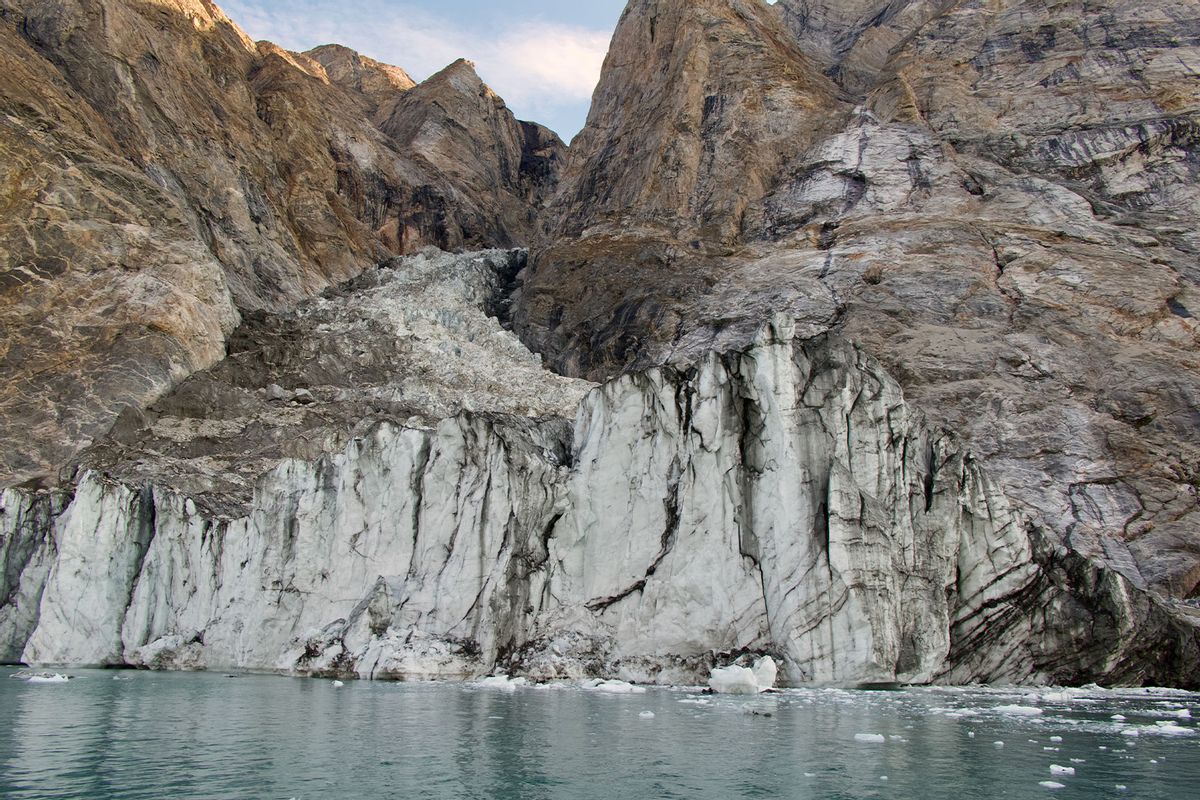An anomalous seismic signal recorded for nine days in September 2023 was caused by the impact of massive landslide and tsunami in Greenland following the collapse of a glacier, new research has found. The source of the anomalous signal was confirmed Sept. 5 by an international team of researchers that included 68 scientists from 40 institutions in 15 countries. The glacier's collapse was due to climate change, and more collapses are expected in the future. No people were harmed.
The seismic signal crossed the globe in under an hour, from eastern Greenland to Antarctica, with massive waves sloshing against in stone walls of a narrow valley until they rung out through the earth like “a big musical instrument” for nine days — every 90 seconds. Thought they initially classified the signal as a "USO" — or, unidentified seismic object — they solved the mystery, reporting their findings Thursday in the journal Science.
“When I first saw the seismic signal, I was completely baffled. Even though we know seismometers can record a variety of sources happening on Earth’s surface, never before has such a long-lasting, globally traveling seismic wave, containing only a single frequency of oscillation, been recorded. This inspired me to co-lead a large team of scientists to figure out the puzzle," study co-author Stephen Hicks, of University College London Earth Sciences, said in a Friday release.
"We do know that the tsunami washed away vegetation and soils from the walls of the fjord, but we do not know yet what the impact on fauna might have been," Hicks told Salon in an email. "A specific research working group will likely study this in the near future."
The scientists said the landslide sent an estimated that 25 million cubic meters of rock and ice crashing into Dickson Fjord from a collapsing 1.2 kilometer-tall (roughly three-quarters of a mile high) mountain peak. The resulting splashdown sent water surging 655 feet in the air, then created a 360-foot wave that crossed 6.2 miles of the fjord.
 Image of landslide site taken on Sept. 19, 2023 following Sept. 16, 2023 event. (Danish Army)The event was not observed by human witnesses, but the high-speed force of the waters stripped the plant life off the shoreline of the fjord, then traveled on to destroy cultural and archeological heritage sites at a research base 43 miles away from the initial crash — with the latter waves still reaching 13 feet in height by that time. No one was directly injured by the event, though the splashdown occurred in a routinely trafficked tourist route. In a western Greenland fjord in 2017, four people were killed and two villages permanently abandoned when a landslide triggered a smaller tsunami.
Image of landslide site taken on Sept. 19, 2023 following Sept. 16, 2023 event. (Danish Army)The event was not observed by human witnesses, but the high-speed force of the waters stripped the plant life off the shoreline of the fjord, then traveled on to destroy cultural and archeological heritage sites at a research base 43 miles away from the initial crash — with the latter waves still reaching 13 feet in height by that time. No one was directly injured by the event, though the splashdown occurred in a routinely trafficked tourist route. In a western Greenland fjord in 2017, four people were killed and two villages permanently abandoned when a landslide triggered a smaller tsunami.
Want more health and science stories in your inbox? Subscribe to Salon's weekly newsletter Lab Notes.
As reported by Science, the team found a dark band of sediments on the glacier’s face when they later visited the site of the 2023 event. The band was left by the tallest waves of the sloshing water in the valley, with a high-water mark that was more than twice as tall as the Statue of Liberty.
The study's lead author, landslide scientist Kristian Svennevig, of the Geological Survey of Denmark and Greenland, noted the historic first and attributing the breakthrough to international cooperation.
“When we set out on this scientific adventure, everybody was puzzled and no one had the faintest idea what caused this signal. All we knew was that it was somehow associated with the landslide. We only managed to solve this enigma through a huge interdisciplinary and international effort,” he said.
The team confirmed that the tsunami was among the largest measured in recent history, and that this is the first known recording of sloshing water through the earth's crust. It is also the first known landslide and tsunami observed from Greenland, researchers said, "showing how climate change already has major impacts there."
Scientists at NASA's National Snow and Ice Data Center said last year that — regardless of the actions undertaken today — humanity will need to plan to for the likelihood of municipal failures in the coming decades, as sea levels are predicted to rise continually due to global warming effects of climate change.
Massive population shifts in the United States and elsewhere are expected as rising sea levels threaten to displace billions of coastal residents via inland flooding, causing widespread damage to public utilities — such as physical infrastructure for sewage and drinking water, telecommunications, electrical and transportation. The highest risks of the most extreme forms of this damage, NASA said, are associated with the potential for rapid ice sheet loss.
Read more
about climate change



Shares